
Before we get into the details about a DCP, we must look at its history and the era before digital cinema to understand the choices made and their consequences on the digital cinema now.
In the 90s, the theaters wanting to test the digital projection carried out some experiments. They made their own setups, and thus their own specifications for the projection : Two theaters - even if there are nearby - may have different workflows. By contrast, the 35mm format is compatible with all theaters equipped with a 35mm projector. Electronic cinema workflows were different and specific to each theater.
When a Film laboratory tries to make and send a film print for distribution to a theater equipped with its own electronic projection workflow, the laboratory had to request a lot of information to determine the type of projection and the format to deliver : one theater played only MPEG files, another only HDCAM format, and the next only LaserDisc format : Everyone had their own projection format.
So, it was complicated for a laboratory (and for a distributor too) to get the job done with ease. Compared to 35mm with 4 perforations, all of this will be hard to manage and will have a huge impact on the cost of making copies and distributing them for the distributors.
Concerning the projection, without any technical or quality standards, each theaters used their own technicals resources available during this era : it was chaos with some projections that were more or less... decent (read "often not decent").
This ambiguous era was named e-cinema or electronic cinema (not digital)
(keep this in mind when someone tries to talk about a new concept using the term e-cinema :)
To study the standardization of digital cinema, starting in 1999, a team - named DC28 - was created within the SMPTE - the association founded in 1916, composed of engineers and technicians working in the cinema and audiovisual industries, and responsible for defining industry standards.
Starting in January 2000, the team worked actively to define the industry needs, from mastering, through distribution, to projection, with the goal of delivering results at the end of 2000.
Many workteams were created to manage parts of this project :
| Group name | Scope |
|---|---|
| DC28.1 | Steering and Systems |
| DC28.2 | Mastering |
| DC28.3 | Compression |
| DC28.4 | Conditional Access |
| DC28.5 | Transport & Delivery |
| DC28.6 | Audio |
| DC28.7 | Theater Systems |
| DC28.8 | Projection |
Other workteams were created for packaging, security and colorimetry (DC28 Color). The latter began its work in 2002 and was composed of experts from industries, studios, post-production and cinema equipment manufacturers.
In early 2002, the studios 20th Century, Disney, MGM, Paramount, Sony Pictures, Universal and Warner joined forces to create the Digital Cinema Initiatives (DCI) consortium in order to establish a common specification for the digital cinema. This specification must be based on the SMPTE standards in order to make sure to have a perfect standardization for this new kind of digital projection.
A group of technical experts worked together on this subject, linking it to the work of the SMPTE DC28 group.
The first research and work started in order to identify the first steps of this new specification.
There were several primary goals - according to Brad Hunt, Technical Director of Motion Picture Association of America (MPAA) :
In addition, a compatibility with the traditional practices established with 35mm in distribution and projection : Too many disruption may have a negative impact, especially if the transition lasts for years. And the longevity of the format : just like the choice of the 35mm format at the beginning of 1900, the new format must have a long-term viability for the next century.
As a supplement, we could mention this points :
From a financial point of view, the transition of digital cinema will have a huge impact : each 35mm print film is expensive, the cost could be at least 800€ and up to 2500€. Each copy is charged by the film laboratory to the distributor (the latter will charge indirectly the producer). During a film release, between 300-500 copies may be created. Each week, many movies are released (in France, 4-6 each week). We see the huge financial impact engaged in a film release. In 2000, the estimated cost was over one billion dollars per year, just for the worldwide print film fees. 1, 2, 3, 4
From an ecological point of view : a 2-hour film print has 3 kilometers of photograms. Each photogram must be developed, printed on a blank film (or recycled) and processed with a large amount of chemical products. Removing this step may radically reduce the usage of chemical products. Besides of this, some long-term medicals pathologies may affect technicians handling film reels during development process. Finally, the end of the treatment of used chemicals products, which, in the near past, involved lowering the acidity (pH) and then, dumping them into the sewers...
Alongside the work of the teams involved in standards, material is needed to validate the technical choices that have been studied and validated.
In 2004, the production of a short film was launched: StEM

Short for "Saint Emilie", this 12-minute short was filmed in 35mm (Super-35) and 65mm. It depicts a wedding party in Europe (Italy, to be precise).
The whole decisions made during the production about direction, framing, and mise-en-scène aimed to test and evaluate the entire technical choices, including colorimetric conversions, image compression, and digital projection.
For example, we have rain, confetti, tracking shots with a focus on the background, some moving and disruptive elements in the foreground. All of these elements could cause issues with many compression algorithms, which are designed to reduce the size of each picture using various techniques (tricks!).
Example of frames from StEm :
 |
 |
 |
 |
|---|---|---|---|
| Moving objects | Sheet on background | Water | Foreground Elements |
 |
 |
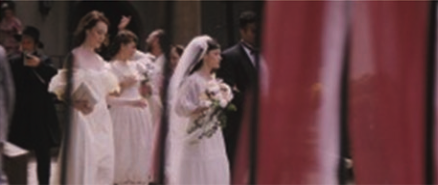 |
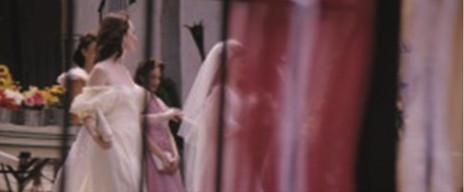 |
| Sheet Foreground | Railing Foreground | Focus on background | Sheet + Railing + Focus |
The short film is available here.
With the evolution of new cinematographic features, a new short film has been produced !
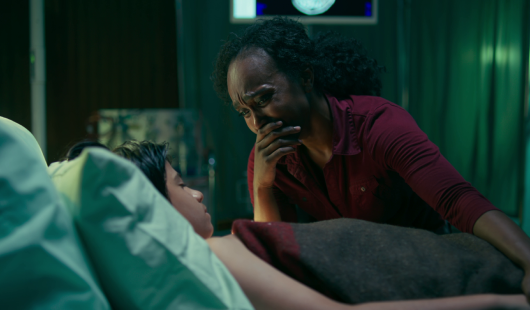
| 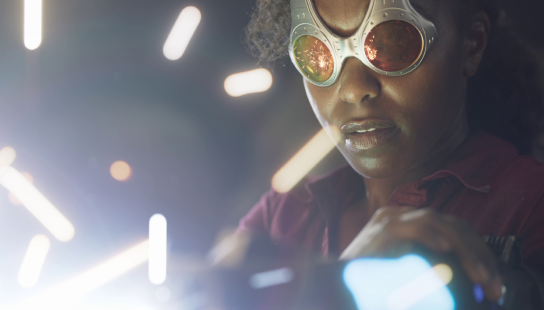
|
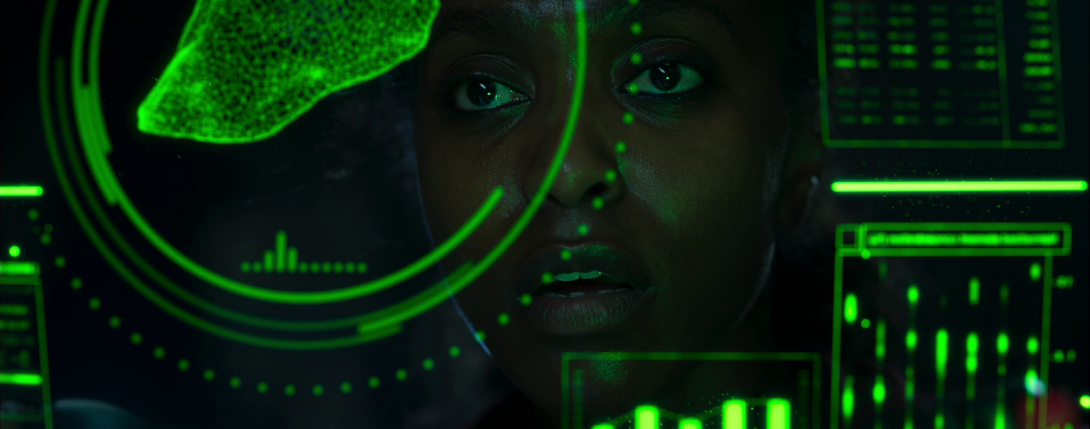
|
|
Simply named ASC StEM2 - Standard Evalution Material 2, or the real name The Mission, this short introduces new techniques, missing in the previous short film, such as HDR, high resolutions, Wide Color Gamut, new and higher nits, IMF, and even EXR, ...
Behind the scene - StEm2 :
In July 2005, the first release of DCI specifications was published. Since then, a lot of erratum have been added until the release of the version 1.4, in 2020.
This specification is very wide. Not limited to the DCP format, the specification provides a technical and qualitative framework for the projection, transport, mastering, etc.
Based (mainly) on the SMPTE standards, the specification refers to them constantly.
However, in 2005, the SMPTE standards for digital cinema weren't completely finalized, they were still in draft or final stages.
Before having complete standards, DCI provides an intermediate (and temporary) format, the Interop DCP, identical to the SMPTE format (with some minor changes). This transitional format was used until the final approval of the entire SMPTE standards for digital cinema, which were released in March 2009.
Now, all DCP must comply with the SMPTE standards. However, most DCP players installed in theaters worldwide aren't fully compliant with the SMPTE format. The SMPTE-DCP website provides a map to follow the global adoption of the SMPTE format around the world :
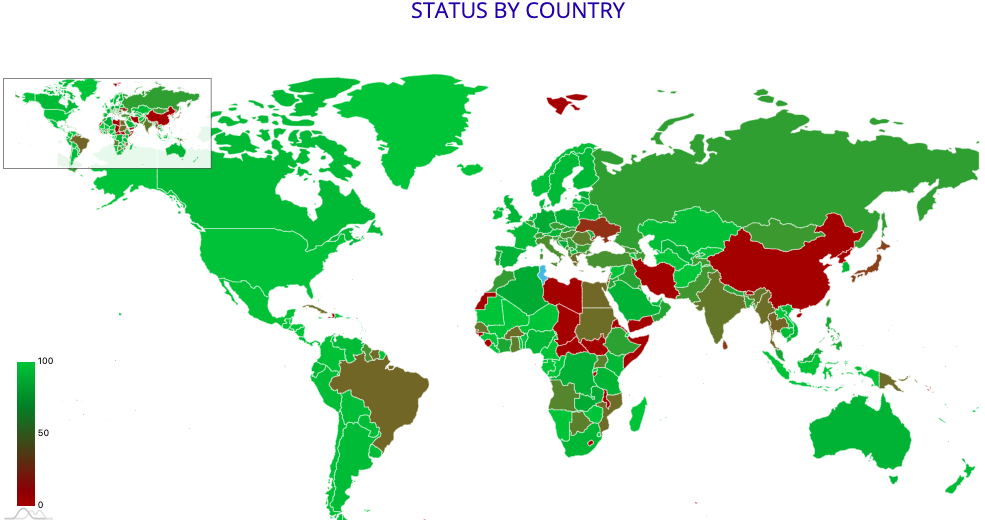
Until full SMPTE compliance is completed worldwide, Interop DCPs will be still there.
A non-exhaustive list of technical point of view provided by technicians working on the DCI specifications :
Frame must be independant of each other : On the contrary to MPEG4 format where each frame is computed based on its previous frames. If a frame has an issue, artefacts may appear. This kind of issue is not possible during projection. So, each frame must be complete and displayed properly during projection.
Using JPEG2000 : this format has been chosen for several reasons, particulary for its compression algorithm based on discrete wavelet transform. its provides sharp pictures with low compression or blurred pictures with high compression, instead of pixelization caused by other compression algorithms. A huge advantage on projection.
Encryption tailored for the industry : DCP aren't encrypted each time, for each copy, for each theater. a DCP is encrypted only once. Then, the keys, used for the encryption, are encrypted and finally sent to the theaters. This method avoids encrypting each copy. A size of DCP is huge, often more than 500 Go/GB, some of them can reach up to 900 Go/GB (Avatar 2). The size of encryption key is only 16 octets (16 bytes). So, we can encrypt thousands of keys (one per theater room, one per DCP player) very quickly.
Metadata must be easily readable and interpretable : a DCP provides several XML files which be human-readable with a simple text editor.
Be extensible for future evolution while respecting the current and the future workflow : over time, DCP has been able to integrate new features, such as Dolby Atmos, Cinema 4D (eg. DBOX) and HDR Cinema.
Allow versioning : A DCP can be a DCP "master" (aka Original Version / OV) or a DCP "extension" (aka Version File / VF) which allows to add subtitles, more soundtracks or a new cut, without having to recreate a new DCP from scratch.
Luminosity compatibility with 35mm projection : DCI specification sets luminance value at 48 cd/m2 (14 ftL or Foot-Lambert) with white point value at 0.314 x, 0.351 y. (if you don't understand, that doesn't matter :)
Free-to-use, royalty-free, license-free and opensource oriented : Specifications and norms can be implemented by anyone. No companies can claim ownership, or proprietary rights, or create any kind of monopoly - directly or indirectly :
The Packaging standard is required to be based upon an open worldwide standard. This format is encouraged to be a license-free technology -- DCI specifications
The format [MXF] should be open, standardized, and compression-format independent -- The MXF Book
MXF was chosen, largely for its freedom from patents and the associated royalties -- The MXF Book
Thus, the entire choices in DCI specifications are aligned with these purposes.
Get all specifications and standards in this chapter.
If you want to learn more about the history of digital cinema, you can read this articles :